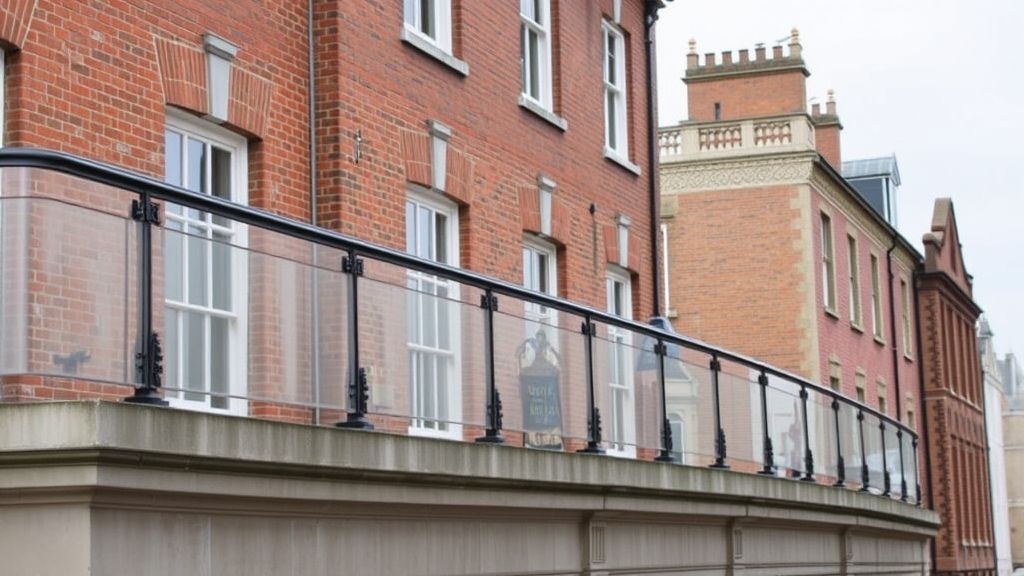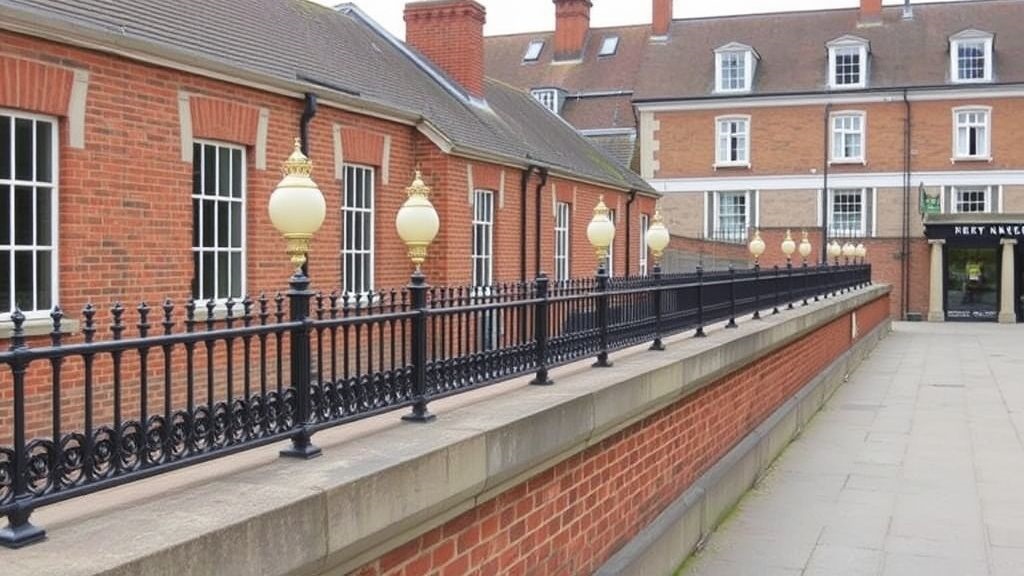There is no man on earth who enjoys being told what he may not do, especially when the one forbidding him wears a sash of authority and quotes a statute instead of common sense. Yet such is the plight of anyone who touches a listed building. The moment a hand is laid upon stone or sill, the spirit of regulation rises like a bailiff in the night. Parapet barriers for listed buildings stand squarely in that uneasy territory where grief for the past jars against dread of the future. The masonry we inherited is deficient by modern habit, for people these days have a propensity to lean, to stumble, to sue. Thus the parapet, once content to be a waist-high ornament, must now be reinforced against the calamities of gravity and litigation.
The letter of regulation demands that no life be wagered on nostalgia, and so parapet barriers for listed buildings are drawn into a slow duel between safety codes and the pieties of preservation. To raise, to bolt, to glaze, to cage each verb is the beginning of an argument with the planning authority.
Parapet Barriers For Listed Buildings Safety Requirements

The first argument is always safety, unavoidable and undramatic. A fall is final, and the law prefers to spend its pity beforehand. Yet the cure is never so simple as fastening a stout post and rail, since listed buildings are not livestock yards. One must persuade the eye that the new thing was always there or at least that it does not hiss and flash like a mistake. Glass is the darling of this diplomacy, being transparent in its ambition. But glass is honest in the sun and tattles at every angle. Steel, slim and painted to the melancholy of lead, fares better in contrition. Timber works only when the house is old enough to forgive it. Each choice is freighted with the suspicion that the cure may wound the patient worse than the risk.
Safety is a moral fact; sympathy is an aesthetic one. The craft of parapet barriers for listed buildings is to honor both in the same gesture.
Heritage Consent For Parapet Barriers On Historic Roofs
Consent is the coin with which the living must bribe the dead. One applies, and then one waits, like a man with his hat in his hands. The conferral of permission is rarely a matter of right but of rhetoric. The applicant must speak in the dialect of heritage: reversibility, legibility, minimal harm, like a catechism. The barrier must be described not as a conquest but as a courtesy. It must promise to come away cleanly in some future thaw of policy, leaving the old stone unscarred, as though the modern century were only a removable episode.
It is a curious negotiation: to promise both permanence for safety and impermanence for heritage. Parapet barriers for listed buildings must be fixed enough to stop a body, yet delicate enough to satisfy posterity that no vandalism was committed in the name of precaution.
Planning Approval For Parapet Barrier Design Details
The scrutiny falls not on principle but on detail. A fixings line a hair too proud, a shadow too insolent against a cornice, a gloss that reads as impudence any of these can sink a scheme. The authority reads drawings like a censor reads poems, alert for hidden assault. The designer must write with inches instead of ink, ambushing neither skyline nor sill. The most successful schemes are often meek to the edge of invisibility, carried not by flourish but by tact.
Reversible Solutions For Roof Edge Restraint On Heritage Sites
Reversibility is the peace treaty between centuries. To fasten into mortar instead of stone, to clamp rather than drill, to wedge into joints that may later be repointed all such techniques proclaim a moral promise: we are only passing through. The barrier becomes a tenant, not a parasite. The future may evict it without probate.
Yet reversibility is not free. What is removable is sometimes less rigid, and what is less rigid tempts hazard. The engineer must reassure the law with numbers while reassuring the historian with mercy. Parapet barriers for listed buildings are a work of two fidelities binding the same bolt.
Architectural Aesthetics For Sympathetic Parapet Barrier Additions
To design a sympathetic addition is to practice a kind of fraud in the service of truth. The work must deceive the eye into thinking nothing has happened, while telling the record that something has. Color is confession. Texture is rhetoric. Thickness is treason if it bulks against a skyline. Reflection is gossip if it throws noon light across a moulding. A successful barrier leaves no story for the passer-by to tell.
The developer who thinks only of code produces an object that wins the lawsuit and loses the street. The conservator who thinks only of purity produces paralysis at the expense of people. The difficult middle road is paved with reluctance.
Structural Compliance For Listed Parapet Reinforcement Without Damage
The stone of old houses is sometimes softer than the tempers of those who defend it. To rely upon it for anchorage is to risk both safety and heritage. So the design wanders outward in search of structure without sin. Hidden steels behind attic linings, counterweights that lean inward instead of outward, bracketry that bites only sacrificial layers all these contrivances serve the same uneasy vow: to restrain the living without disfiguring the dead.
The engineer’s numbers and the conservator’s conscience must shake hands in the dark of the build, each mistrusting the other but bound to the same roof.
Cost Of Compliant Heritage Parapet Barrier Installation
There is a proverb that heritage doubles the cost and halves the speed. It is as true of a parapet as of a bell tower. To work without leaving scars is slower, and slowness is priced in hours. To fabricate slender and quiet components is dearer than to buy coarse ones off the rack. To stage work so that no insult reaches the stone is patience paid in scaffolds. Those who think the past is free have never tried to preserve it.
Yet the expense is not wholly a tax; it is a ransom. The past is being held against the future, and money is the only negotiator both parties still respect.
Case Considerations For Parapet Barrier Retrofits On Listed Fabric
Every listed building is a stubborn biography with margins too narrow for revision. One house will suffer glass but never metal; another will accept metal but deride gloss; a third will abide nothing but the ghost of a rail set back from view. Parapet barriers for listed buildings are not a type but a negotiation repeated from scratch on each roof. The only constants are gravity and grief.
To write a general law for such work is like writing a treaty between wolves and shepherds; fine for paper, erratic in pasture. Judgment lives in particulars.
Traditional Materials Vs Modern Minimal Parapet Systems In Heritage

There is a romance in timber and iron that flatters the eye, but romance is heavy to lift and obstinate to maintain. Modern systems aim to vanish instead of charm. The debate is not between old and new but between eloquence and silence. In a streetscape already spoken for by time, silence is often the politest guest. The older a place becomes, the less it tolerates fresh speech.
Thus the minimal glass fin or needle rail, if done with contrition, may honor the street more than any lyrical revival detail that calls attention to its novelty.
To install parapet barriers for listed buildings is to take sides in a quarrel between memory and mortality. The heritage guardian fears amnesia; the safety man fears a fall. Both fears are reasonable and incurable. The only honest work is to disappoint each fear as little as the other will allow. In that narrow ledge of compromise stand the better examples of this craft: small in voice, strict in number, kind in touch.
If the past must be defended and the living must be guarded, then the barrier must learn to apologize while it resists. That, and not any statute, is the first principle of building among ghosts.